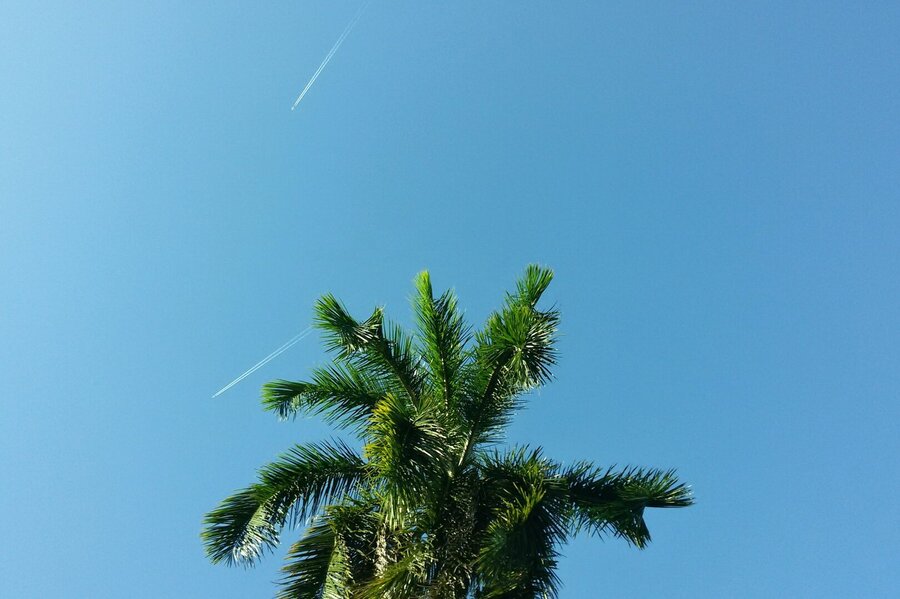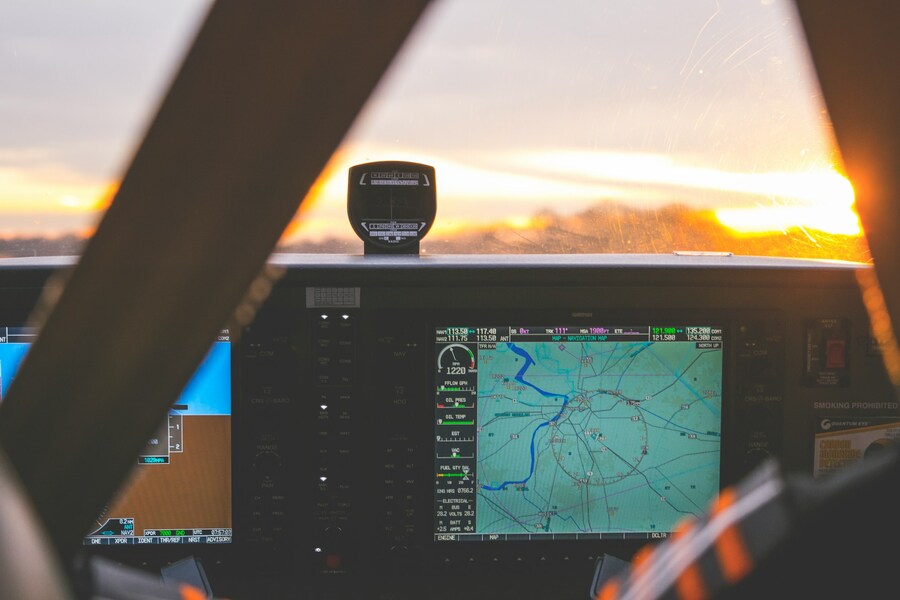The idea that a flight from one point to another should take the same amount of time in both directions isn't entirely accurate. Consider a flight from Los Angeles to New York, for example. The eastbound flight may be scheduled for 5 hours and 15 minutes, but the return flight could take nearly an hour longer. This discrepancy isn't due to a different route or busier skies at certain times of the day. Let's explore the reasons why flying westbound takes longer than eastbound!
So why do actually flights take longer westbound?

Source: June Ronel Biboso/Unsplash
Understanding the jet stream
The reason why flights take longer when traveling westbound is due to the wind, specifically the jet stream. The jet stream is a fast-moving air current found high in the atmosphere that flows from west to east. Japanese meteorologist Wasaburo Oishi first documented this phenomenon in the 1920s, discovering that the jet stream is strongest around 6 to 8 miles above the Earth's surface, which is the typical altitude for commercial flights.
Jet streams form because of the Earth's rotation and the uneven distribution of surface temperatures, with colder air at the poles and warmer air in the tropics. As these air masses meet, they create a fast-moving current of air high in the atmosphere. Jet streams are relatively narrow, typically reaching about 100 miles across, and there are several of them, including the prominent polar and subtropical jet streams.
How do jet streams influence flight planning?
Pilots and route planners carefully consider jet streams when determining flight paths. Jet streams not only shift locations from north to south, but their strength also varies depending on the season. They tend to be strongest in winter, reaching speeds of up to 275 mph, and become less intense during the summer.
These changes in jet stream strength affect flight schedules. For example, Cathay Pacific Airways' shortest flight from Hong Kong to Los Angeles in 2023 was 12 hours and 12 minutes in December, while the longest flight on the same route was 13 hours and 38 minutes in July.
In the winter, the jet stream is stronger, and the plane is flying westbound, in the direction of the prevailing winds. This allows the plane to "ride" the jet stream and be propelled by tailwinds, shortening the flight time. On the way back, flying against the headwinds adds considerable time to the flight.
Airlines can save on fuel costs and reduce flight time by carefully planning their flights around jet stream patterns. In some cases, airlines may even take unexpected routes to take advantage of strong jet streams. For example, in 2022, Cathay Pacific operated some flights from New York to Hong Kong across the Atlantic, rather than the usual Pacific route, saving 45 minutes due to the strong Atlantic jet stream.

Source: Cédric Dhaenens/Unsplash
The effect on long-distance flights
Jet streams can affect the duration of transcontinental flights in the United States by about an hour. However, the impact is more noticeable on longer flights, such as from Los Angeles to Hong Kong. Advances in aircraft technology have made it possible to fly nonstop between distant locations, with the flight from Singapore to New York currently being the world's longest.
As airlines push the range of their aircraft to the limit, variations in the jet stream can cause problems. For example, Air New Zealand's flight from Auckland to New York typically takes 17.5 hours, but a strong jet stream can force the aircraft to carry more fuel, leading to the airline having to remove passengers or their luggage.
Scientists believe that the jet stream is also responsible for a phenomenon called clear air turbulence, which has been affecting more flights lately. Aircraft flying near the edge of the jet stream can encounter this type of turbulence due to differences in wind speed, but it can be difficult to predict, as it often occurs in cloudless skies and doesn't show up on radar. Therefore, it's crucial to follow the flight attendants' instructions and keep your seat belt fastened while seated.
Simplify your airport experience with our platform – ParkingNearAirports.io!
Understanding jet streams can help explain flight time variations, but navigating airport parking shouldn't add stress to your trip. Thankfully, our smart booking platform, ParkingNearAirports.io, simplifies airport parking nationwide, offering a variety of convenient and affordable off-site parking options, including Kennedy Airport long-term parking locations, parking near LAX Airport with shuttle, and more. Just compare airport parking rates and book your spot in advance with our user-friendly service. And… Arrive relaxed, knowing your parking is secured, and focus on the exciting parts of your journey!






